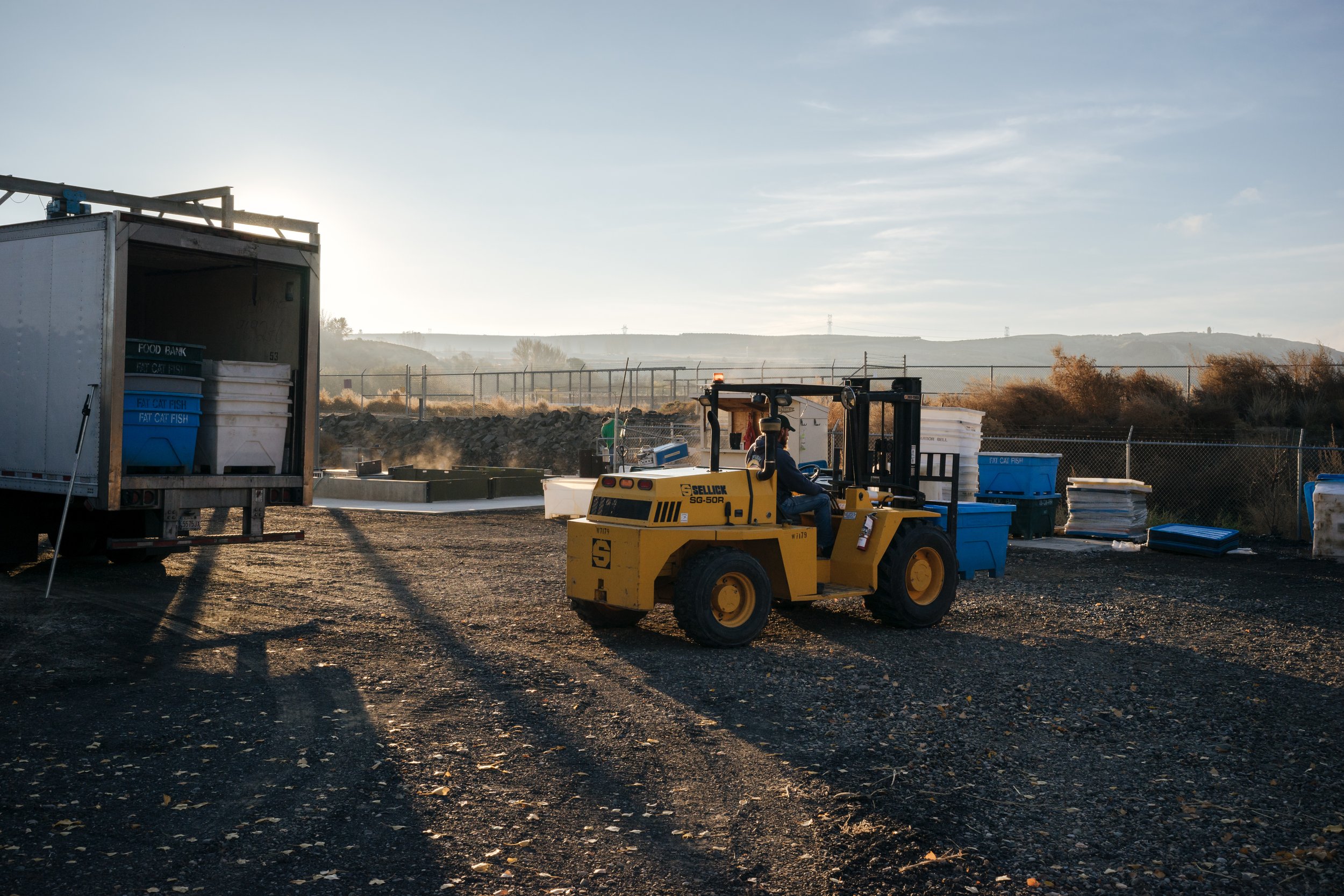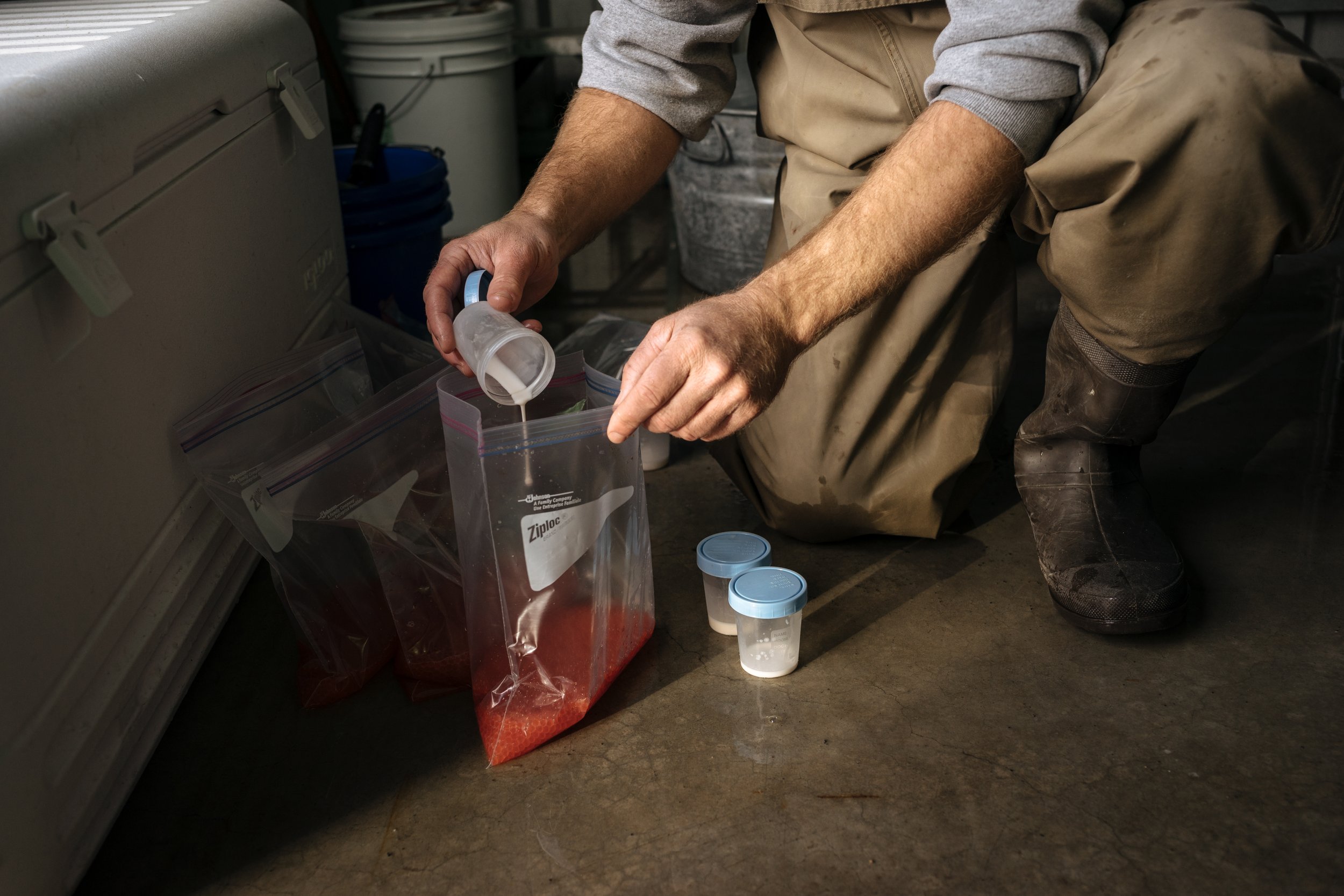Ringold
This project was is an exploration of an important process integral to Washington State. Ringold and hatcheries like it across Washington provide an important service to the state and beyond. This service is critical to the function of the state beyond fishing, these hatcheries help support ecological balance for the Northwest region and beyond. This series focuses on just a small but critical contribution made by the caretakers of the Ringold fish hatchery, examining the Fall Chinook Salmon and Steelhead run of 2015-2016.
Off the East bank of the Columbia River outside the Tri Cities Washington is Ringold, a WDFW fish hatchery. Currently there are three to four full-time technicians that operate the Ringold hatchery. Serving both the micro and the macro, the Fall Chinook Salmon raised at Ringold are distributed throughout Washington State food banks after the run. Beyond acting as a contributing food source, Ringold upholds the cultural aesthetic of the regions cultural phenomenon that is indispensable to the iconography and identity of Washington State. Ecological surrogates of the Fall Chinook Salmon.
The caretakers of Ringold are responsible for raising predominately Steelhead, and Fall Chinook Salmon. As the run comes home researches collect data from the fish. The Steelhead that return to Ringold are sampled by the Washington Department of Fish and Wildlife for a disease called IHN, an affliction prevalent in Steelhead species. A scale sample is also taken from the fish to determine how many years the fish spent in the ocean. This particular throng was a “two salt,” a categorization used to determine the amount of time a fish or school of fish lived in the ocean. Unlike salmon, steelhead do not die at the end of a spawning run. The reason for their return? Simple, it is the place they were born.




